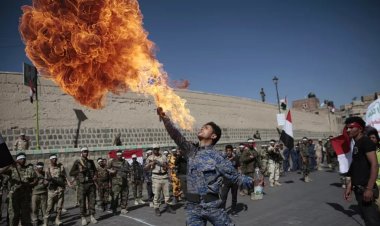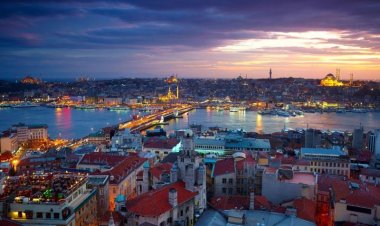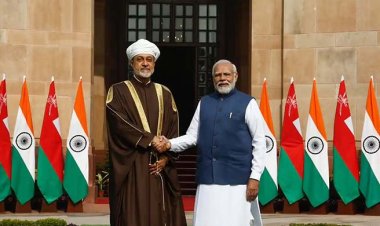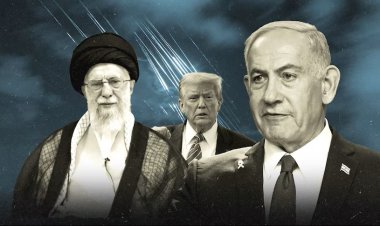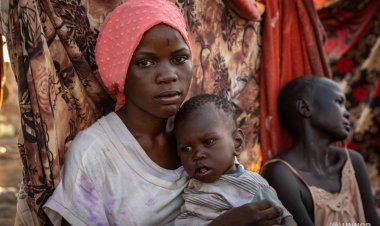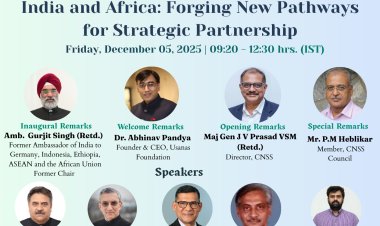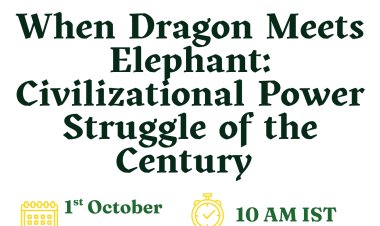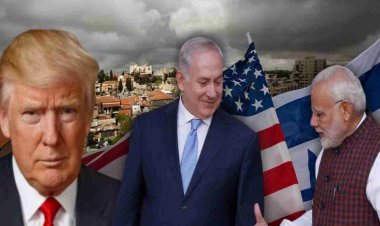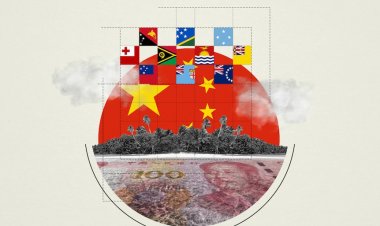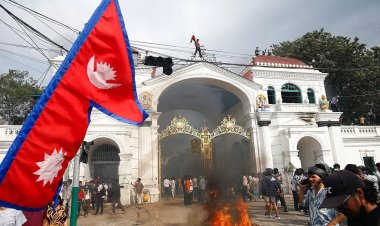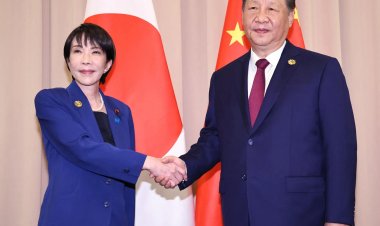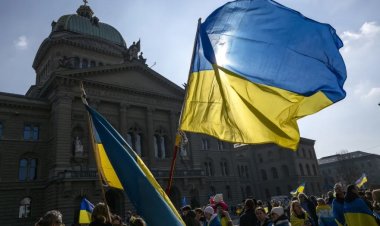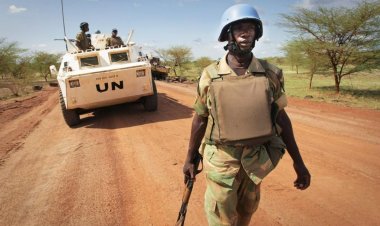Can IMEC Emerge as An Alternative To BRI?
Despite challenges with its execution, the economic potential of the India-Middle East-Europe Economic Corridor can counter China’s Belt and Road Initiative.
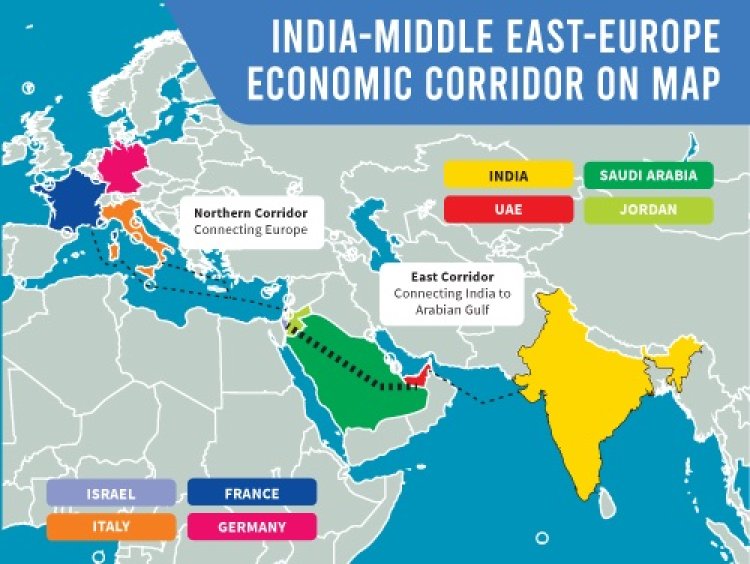
Analysis
By Dr. Abhinav Pandya
On the sidelines of the G20 summit meeting in New Delhi on September 8–9, the United States, India, Israel, Jordan, Saudi Arabia, the UAE, Italy, France, Germany, and the EU together clinched a significant strategic connectivity agreement, the India-Middle East-Europe Economic Corridor (IMEC).
IMEC, a multimodal connectivity project comprising rail and sea components, includes an eastern corridor connecting India with West Asia by sea, followed by a northern corridor connecting West Asia with Europe. According to the White House fact sheet, this ambitious economic corridor aims to connect commercial hubs, lay undersea cables, facilitate the development and export of clean energy, expand telecommunication lines and energy grids, promote clean energy technology, and enhance Internet access for local communities. With its cost-effective cross-border ship-to-rail transit, this corridor is expected to complement the existing sea and road routes with rail routes and set up high-speed data cables and energy pipelines.
India’s former envoy to many West Asian countries, Ambassador Anil Trigunayat, suggested in an interview that IMEC has immense potential to build robust infrastructure and trade networks, generate jobs, boost manufacturing, ensure food and energy security, and reduce greenhouse gas emissions. Though many details are still in the works, IMEC will connect Haifa (Israel) and Piraeus (Greece) with the Middle Eastern ports of Fujairah, Jebel Ali, and Abu Dhabi (all in the UAE), and Dammam and Ras Al Khair (both in Saudi Arabia). These ports will, in turn, connect with the Mundra, Kandla, and Jawaharlal Nehru Ports in India.
The current traffic from India to Europe goes through the sea route, primarily through the Suez Canal corridor. IMEC can serve as an alternative and complementary economic corridor, which, according to the European Commission’s statistics, is likely to reduce travel time by 40 percent and costs by 30 percent. Indian prime minister Narendra Modi called the project “a testament to human endeavor and unity across continents,” and U.S. President Joe Biden hailed it as a “real big deal.” The United States and Europe, with their robust economies, and the Gulf states, with their massive sovereign wealth funds, are expected to contribute generously to the project’s finances. However, the most critical aspects of this project are not economic but geopolitical. IMEC could counter China’s landmark Belt and Road Initiative (BRI) and, by extension, the PRC’s strategic footprint in the Middle East.
The Geopolitics of IMEC
Beijing’s burgeoning ties with the Middle East have not pleased Washington. Saudi Arabia, the UAE, Turkey, and Qatar are already members of BRI. Though Israel is formally not a BRI member, China operates the port terminal in Haifa and has made major investments in infrastructure, construction, and technology in Israel. Chinese companies are bidding for a railway line contract in the country’s center. Americans have objected to Chinese presence at Haifa port as the U.S. Navy’s Sixth fleet regularly docks there, making them highly vulnerable to Chinese bugging and surveillance. Besides, the United States has uneasy relations with Turkey and Qatar owing to their sympathies with Islamist actors; China’s warming up to them goes a step ahead in denting U.S. influence in the Middle East. Israel initially welcomed Chinese investments but is alarmed by China’s strengthening ties with Iran. Notably, in March 2021, China signed a twenty-five-year-long strategic cooperation accord with Iran to boost its investments in Iranian energy, infrastructure, and defense sectors. In addition, IMEC offers Israel an additional reason for strengthening its relations with Saudi Arabia and the Gulf.
For India, IMEC is paramount for its energy and expatriate security, as New Delhi imports 53 percent of its oil and 41 percent of its gas from West Asia. The region is also home to 8.5 million Indian migrant workers. In 2018, out of India’s total remittances of $78.6 billion, $48.6 billion flowed from six Gulf Cooperation Council (GCC) countries. The UAE is India’s third largest trading partner, and the Saudis are its fourth. With its rapidly growing economy and strong credit enabling it to borrow from global financial institutions, it can also contribute to IMEC significantly on its own. With Israel, India has a strong economic and strategic partnership. These ties have the advantage of being historical, civilizational, and organic.
With IMEC’s European stakeholders and the United States, New Delhi enjoys robust ties and a firm consensus to counter China’s revisionist designs, debt-trap diplomacy, strategic acquisitions, and influence operations, which often come under the garb of the BRI. India has opposed BRI since its inception because it passes through Pakistan-Occupied Kashmir (PoK), which falls under the territorial jurisdiction of India. Further, New Delhi understands how China accomplished its strategic objectives through the China-Pakistan Economic Corridor (CPEC) in PoK and Baluchistan’s Gwadar. To offset them, New Delhi has already invested in strategic connectivity projects like Chahbahar Port (to counter China’s Gwadar) and the International North-South Transport Corridor (INST).
In any case, China’s BRI is becoming unpopular throughout the region due to its dubious clauses and debt traps, resulting in some partner countries facing economic downturns, crises, and the eventual surrender of strategic assets. China’s domestic financial woes are also hurting its economic credibility. IMEC offers an alternative that is transparent, participatory, and respectful of territorial sovereignty and integrity. Notably, it is largely led by democratic nations believing in financial responsibility, economic viability, and standards confirming environmental and ecological safeguards.
New “Spice Corridor” or Regional Pipedream?
However, despite the encouraging geopolitics, IMEC is less feasible than it appears on paper. On a closer examination of the project, several potential bottlenecks emerge, which could prevent its realization and success. Most importantly, IMEC members like Saudi Arabia, the UAE, and Italy are members of BRI, and Israel has strong economic ties with China. Saudi-Israeli friction could dampen its prospects. Jordan has a highly unstable security environment and economy due to more than three million Syrian refugees living there. In Israel, IMEC’s proximity to the West Bank makes it vulnerable to terrorist attacks.
A project like IMEC requires stakeholders to agree on technical details, finance, logistics, and other aspects of the proposed infrastructure projects. The experience of economic and trade corridors like INST (International North-South Transport Corridor), Iraq Development Corridor, North-South Corridor, Europe-Caucasus-Asia Corridor, Trans Caspian Corridor, and Northern Sea Route shows that economic corridors involving multiple decision-making stakeholders are difficult to operationalize. None of the above corridors are yet fully operational.
India presents its own set of problems. It has only a few international standard ports, like Mundra and Nhava Sheva—both built by the Emiratis. India possesses a huge population but lacks a skilled workforce, technological and manufacturing base, and business-friendly bureaucracy.
The financing behind IMEC is also unclear. Although member countries have already announced $20 billion for IMEC, the response from the European stakeholders is not necessarily encouraging. In fact, countries like Italy, Germany, and France find it very challenging to decouple from China. Estimates suggest that roughly $3 to $8 billion will be needed to develop each IMEC component. However, no concrete decisions have been made about the allocation.
Also, it can be argued that most of the route in IMEC is through sea, so what is the rationale behind operationalizing rail and road networks? India already has a flourishing sea trade with West Asia. What is the need to have rail and road networks? The costs of loading and unloading and then again loading and unloading will be high and very time-consuming vis-à-vis a direct sea route from India to Europe. Further, compared to China, which constitutes 16.2 percent of the EU’s total trade in goods, India’s European trade pales at 2 percent.
However, one must note that strategic connectivity is crucial to trade and economic progress. Hence, it needs to be diversified. Sole reliance on sea routes increases vulnerability in the event of sanctions, naval blockades, and piracy. Moreover, the Middle East’s vast distances are knit together by only a few rail routes. As mentioned earlier, the IMEC is expected to reduce travel time by 40 percent and costs by 30 percent. This is likely to come from the shortening of distances by constructing rail routes. Also, the rail connectivity between Saudi Arabia and Israel could encourage a future normalization deal and economic partnership.
Hence, despite the considerable obstacles, IMEC is an idea worth exploring. An increasingly volatile world needs alternate strategic routes and supply chains. After the Abraham Accords, countries like the UAE and Israel, with huge investment potential, plan to invest in joint chip manufacturing, Electronic Vehicles (EVs), and EV batteries. The Arabian Peninsula and Jordan have a vast solar energy potential. With its fifth-largest economy, huge population, domestic market, and stable security conditions, India offers excellent investment and consumption opportunities. Hence, the project is worth investing time, energy, and financial resources. It is also pertinent in countering BRI, just as it wanes in popularity. A financially powerful and technologically capable multilateral initiative like IMEC could work if it receives enough attention, energy, and resources from its backers.
Disclaimer: This paper is the author's individual scholastic contribution and does not necessarily reflect the organization's viewpoint.

